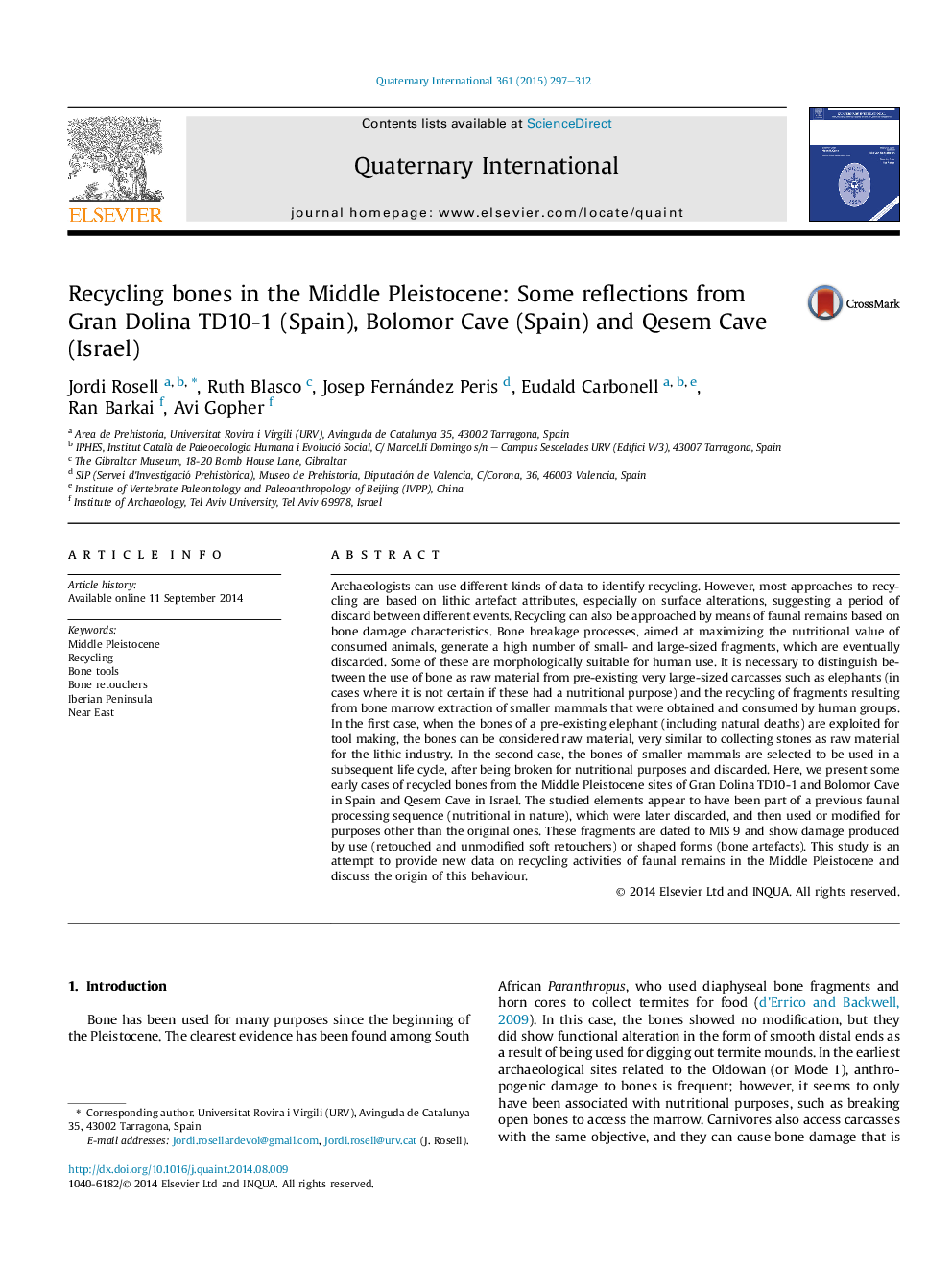| کد مقاله | کد نشریه | سال انتشار | مقاله انگلیسی | نسخه تمام متن |
|---|---|---|---|---|
| 1040941 | 1484136 | 2015 | 16 صفحه PDF | دانلود رایگان |

Archaeologists can use different kinds of data to identify recycling. However, most approaches to recycling are based on lithic artefact attributes, especially on surface alterations, suggesting a period of discard between different events. Recycling can also be approached by means of faunal remains based on bone damage characteristics. Bone breakage processes, aimed at maximizing the nutritional value of consumed animals, generate a high number of small- and large-sized fragments, which are eventually discarded. Some of these are morphologically suitable for human use. It is necessary to distinguish between the use of bone as raw material from pre-existing very large-sized carcasses such as elephants (in cases where it is not certain if these had a nutritional purpose) and the recycling of fragments resulting from bone marrow extraction of smaller mammals that were obtained and consumed by human groups. In the first case, when the bones of a pre-existing elephant (including natural deaths) are exploited for tool making, the bones can be considered raw material, very similar to collecting stones as raw material for the lithic industry. In the second case, the bones of smaller mammals are selected to be used in a subsequent life cycle, after being broken for nutritional purposes and discarded. Here, we present some early cases of recycled bones from the Middle Pleistocene sites of Gran Dolina TD10-1 and Bolomor Cave in Spain and Qesem Cave in Israel. The studied elements appear to have been part of a previous faunal processing sequence (nutritional in nature), which were later discarded, and then used or modified for purposes other than the original ones. These fragments are dated to MIS 9 and show damage produced by use (retouched and unmodified soft retouchers) or shaped forms (bone artefacts). This study is an attempt to provide new data on recycling activities of faunal remains in the Middle Pleistocene and discuss the origin of this behaviour.
Journal: Quaternary International - Volume 361, 10 March 2015, Pages 297–312